Art Deco round walnut coffee table, 1930s
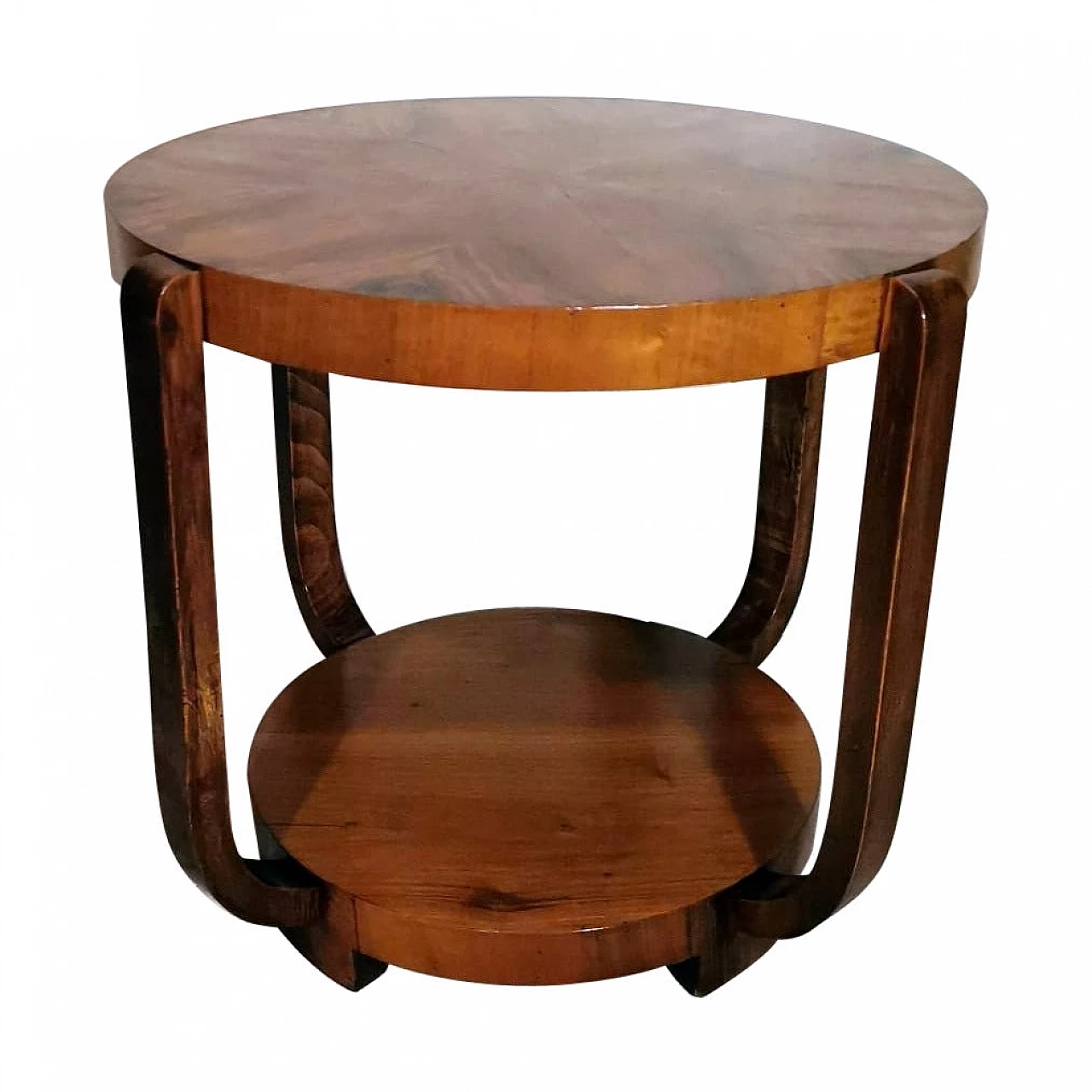
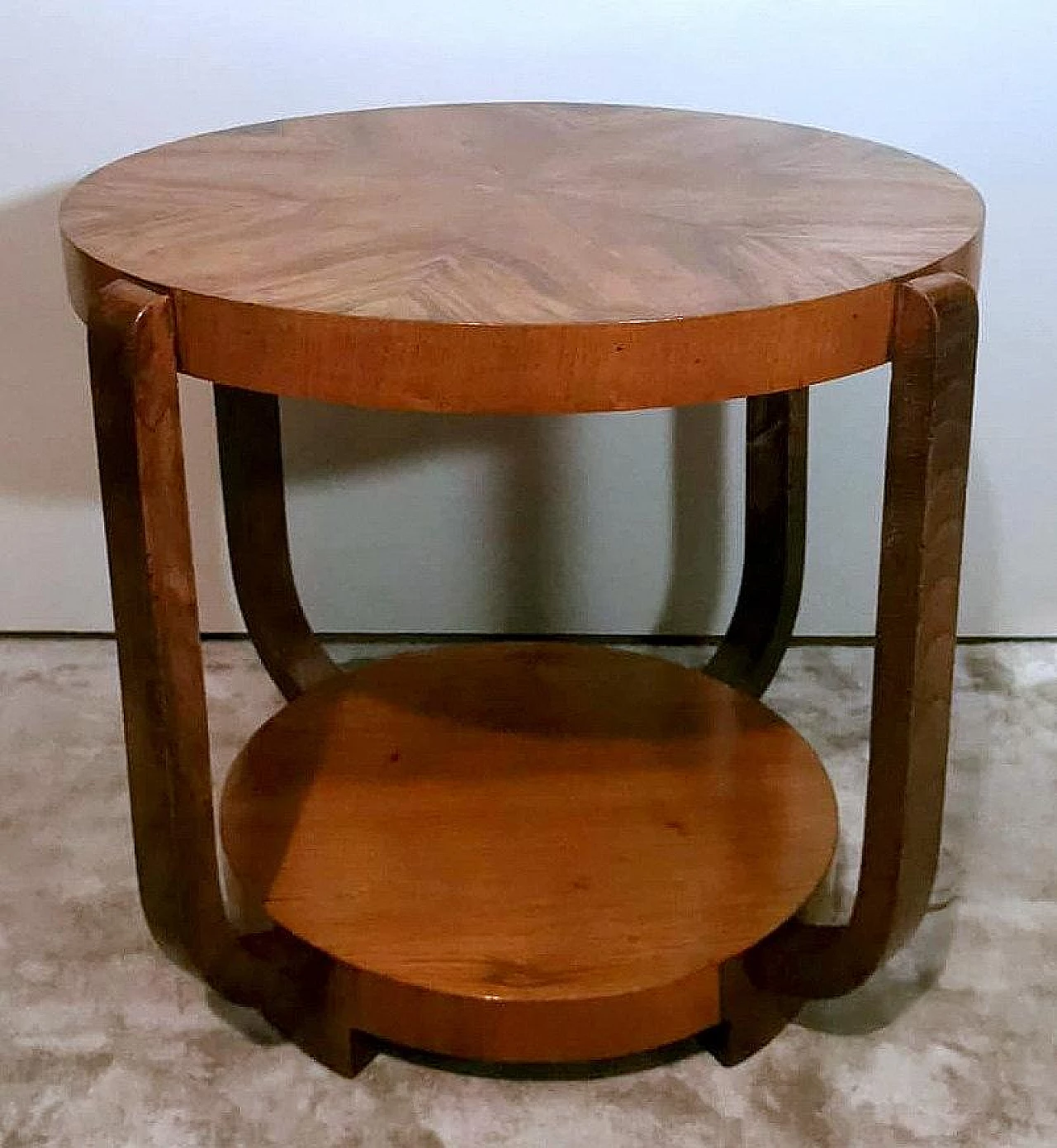
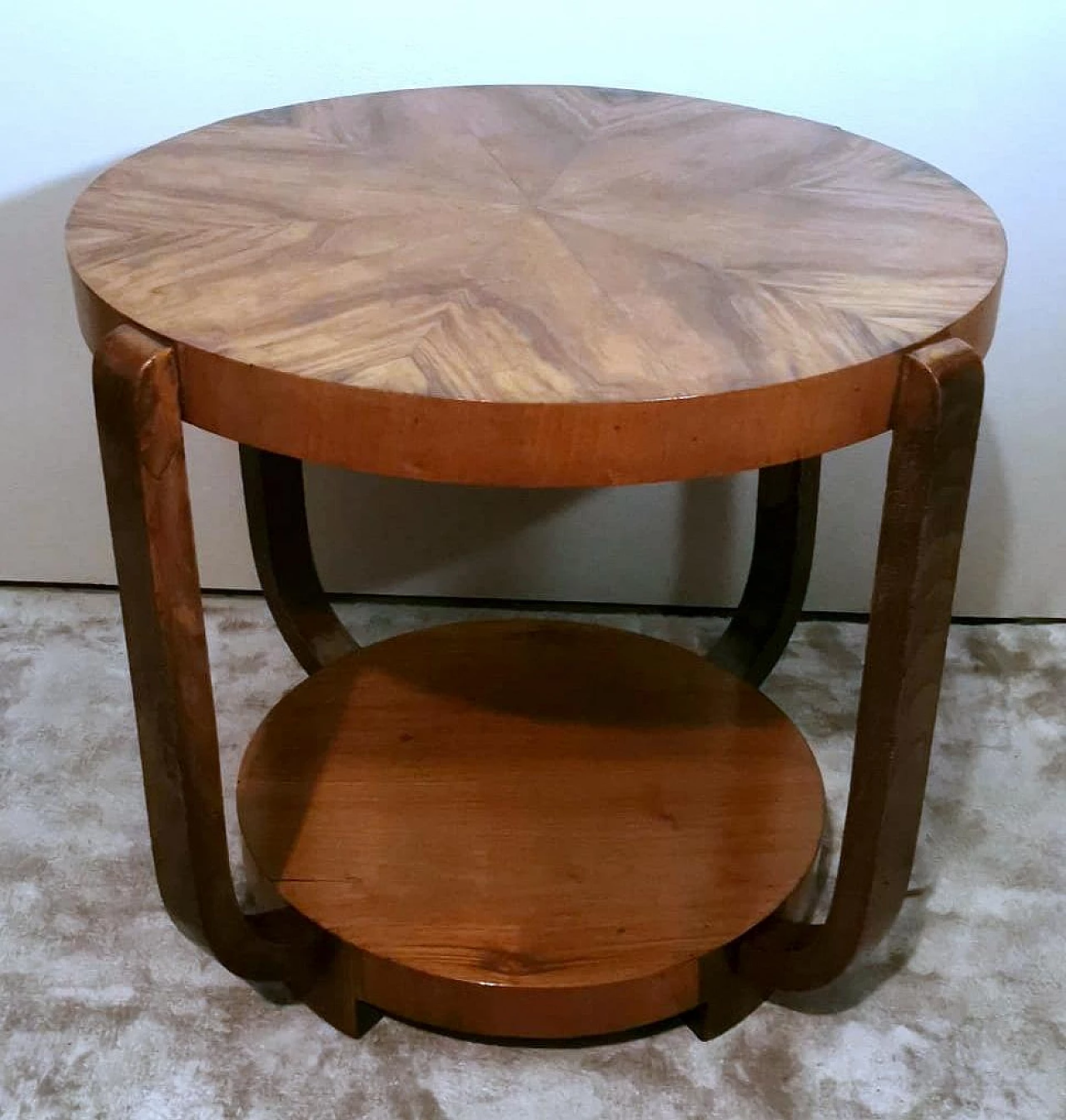
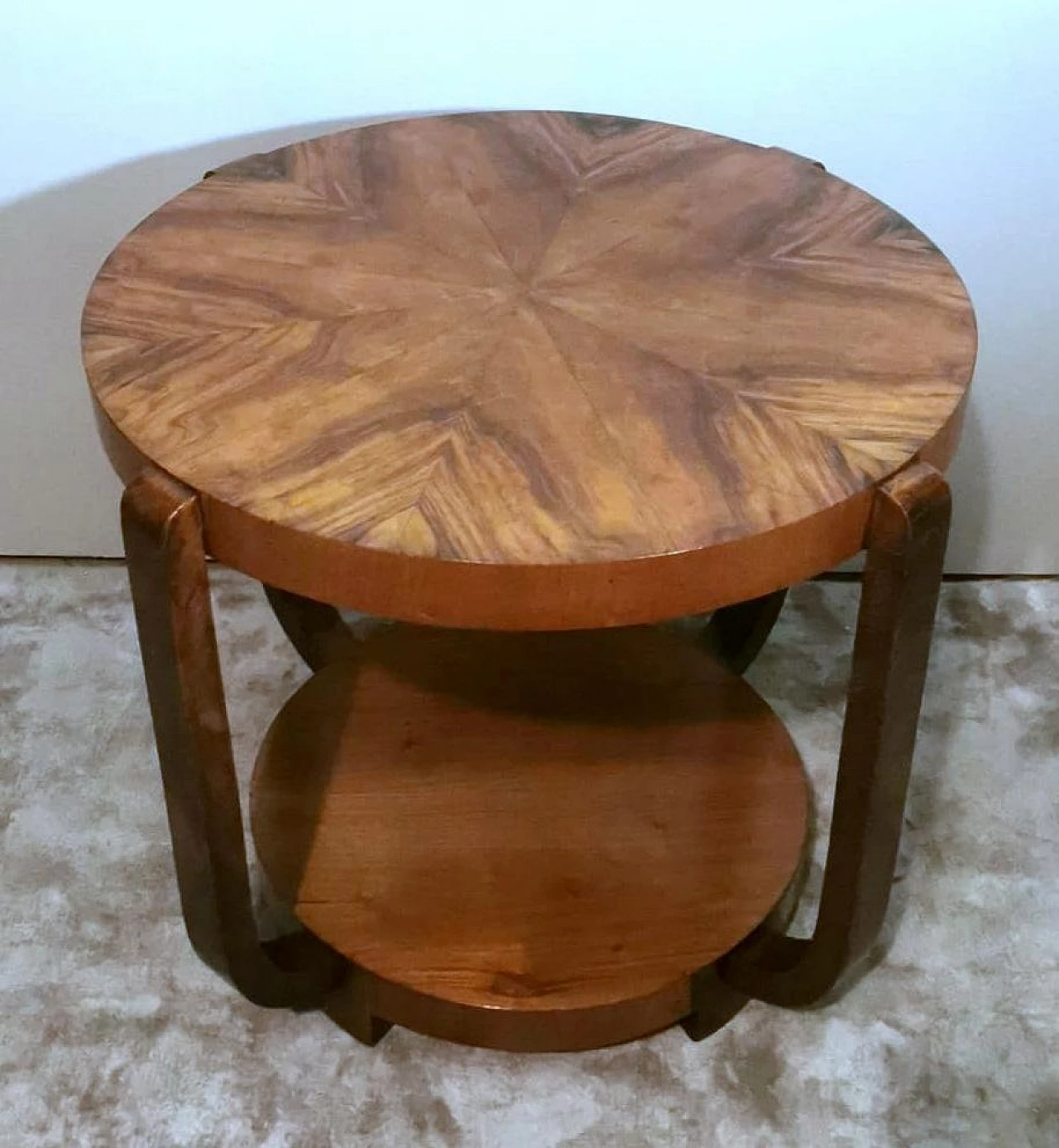
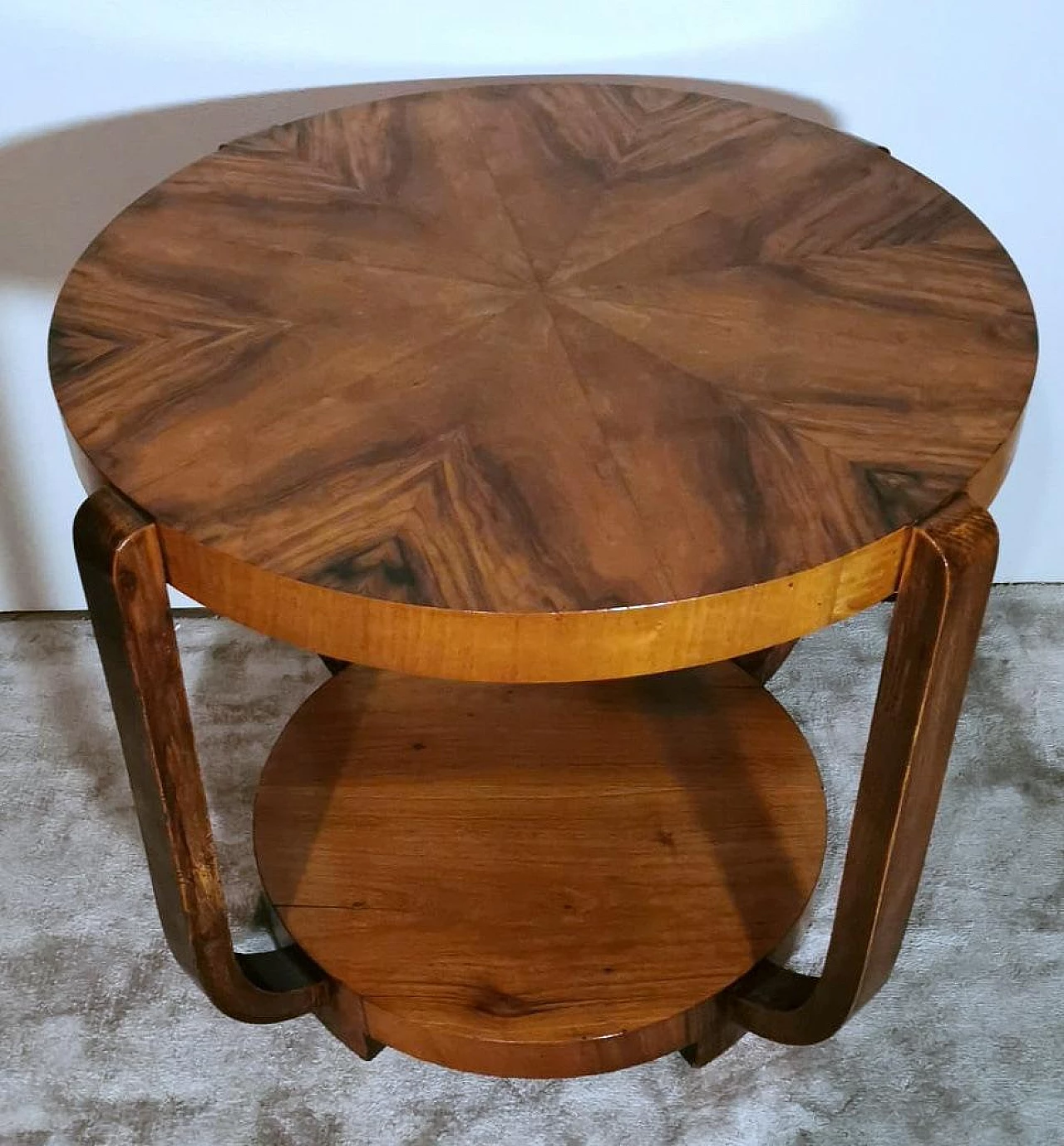
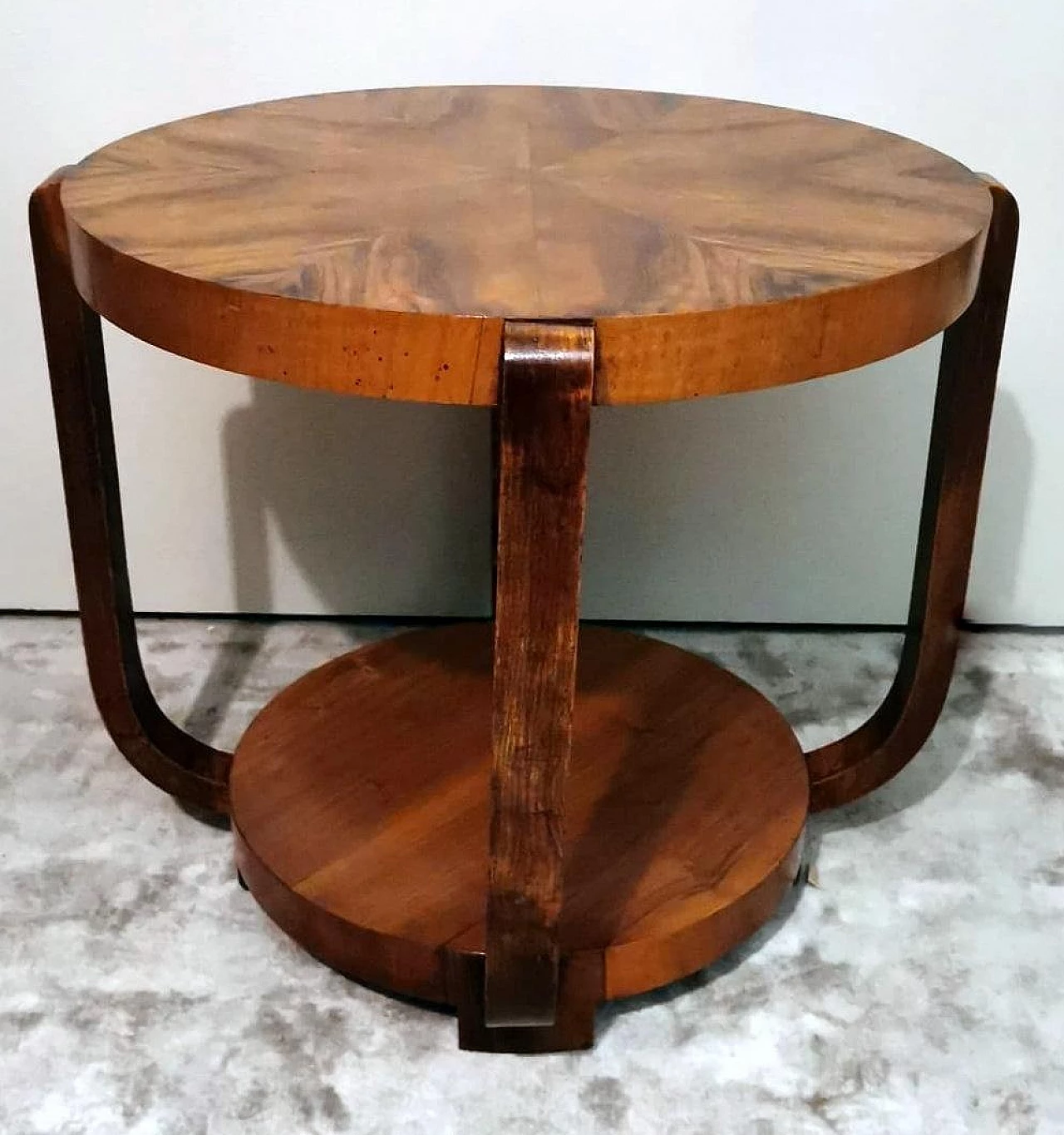
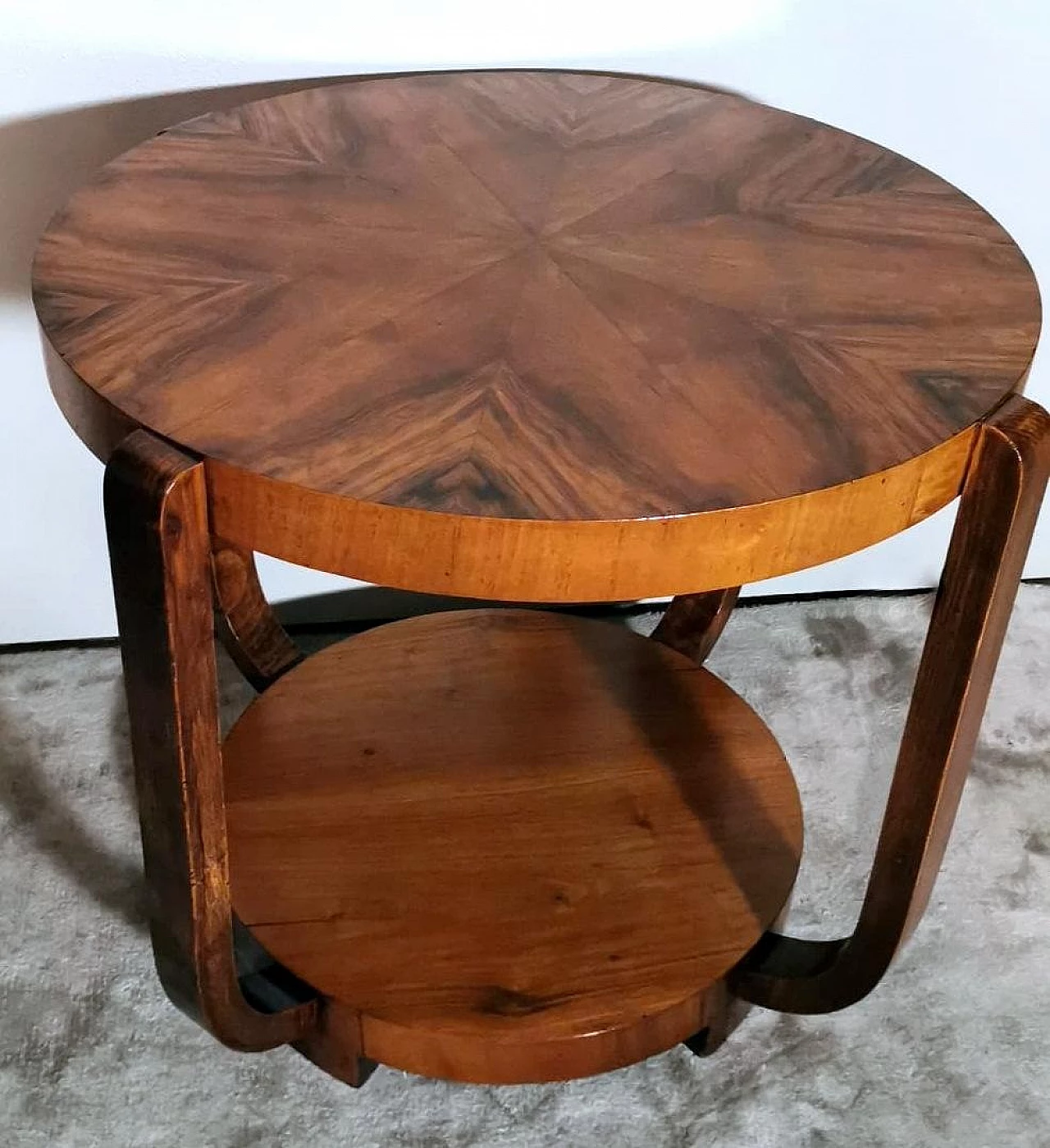
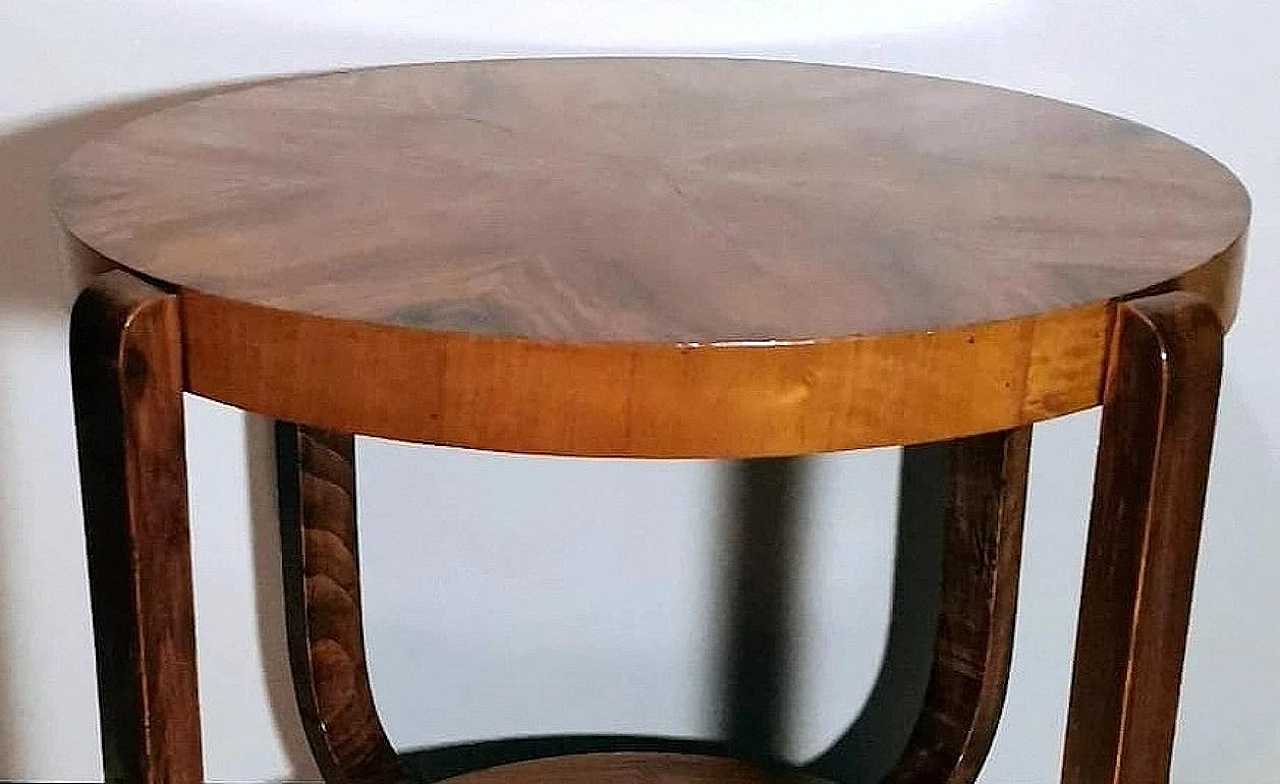
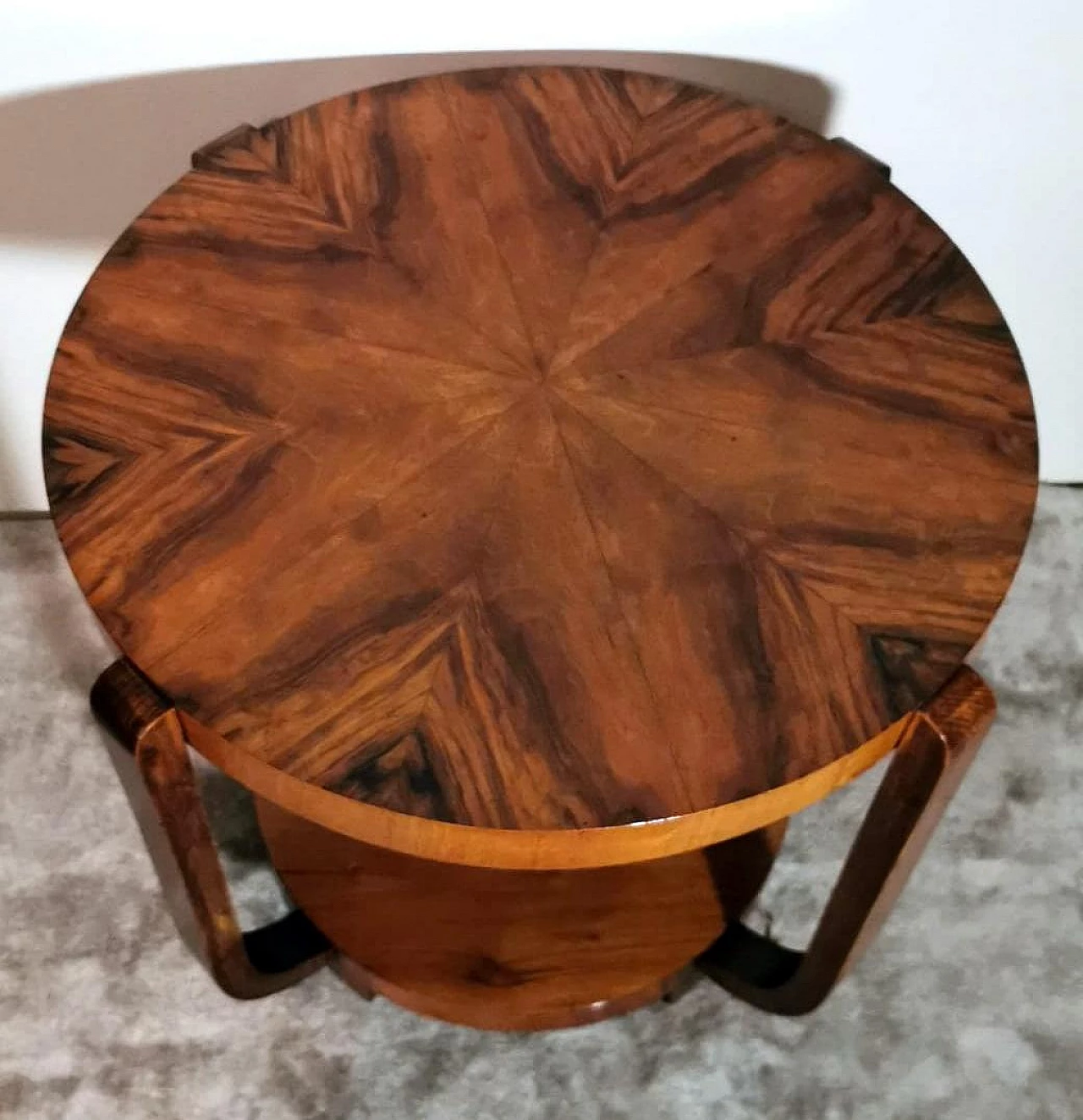
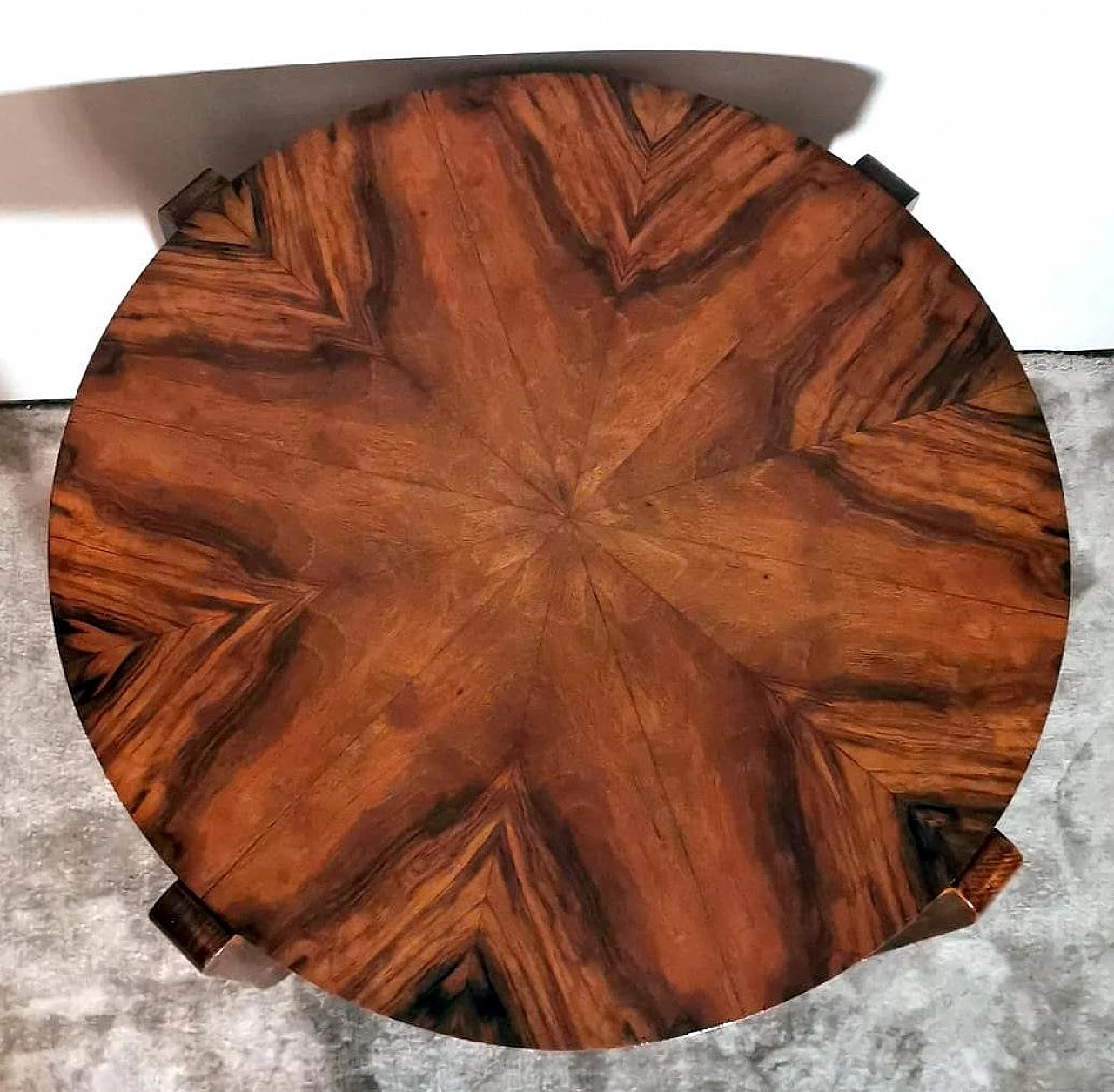
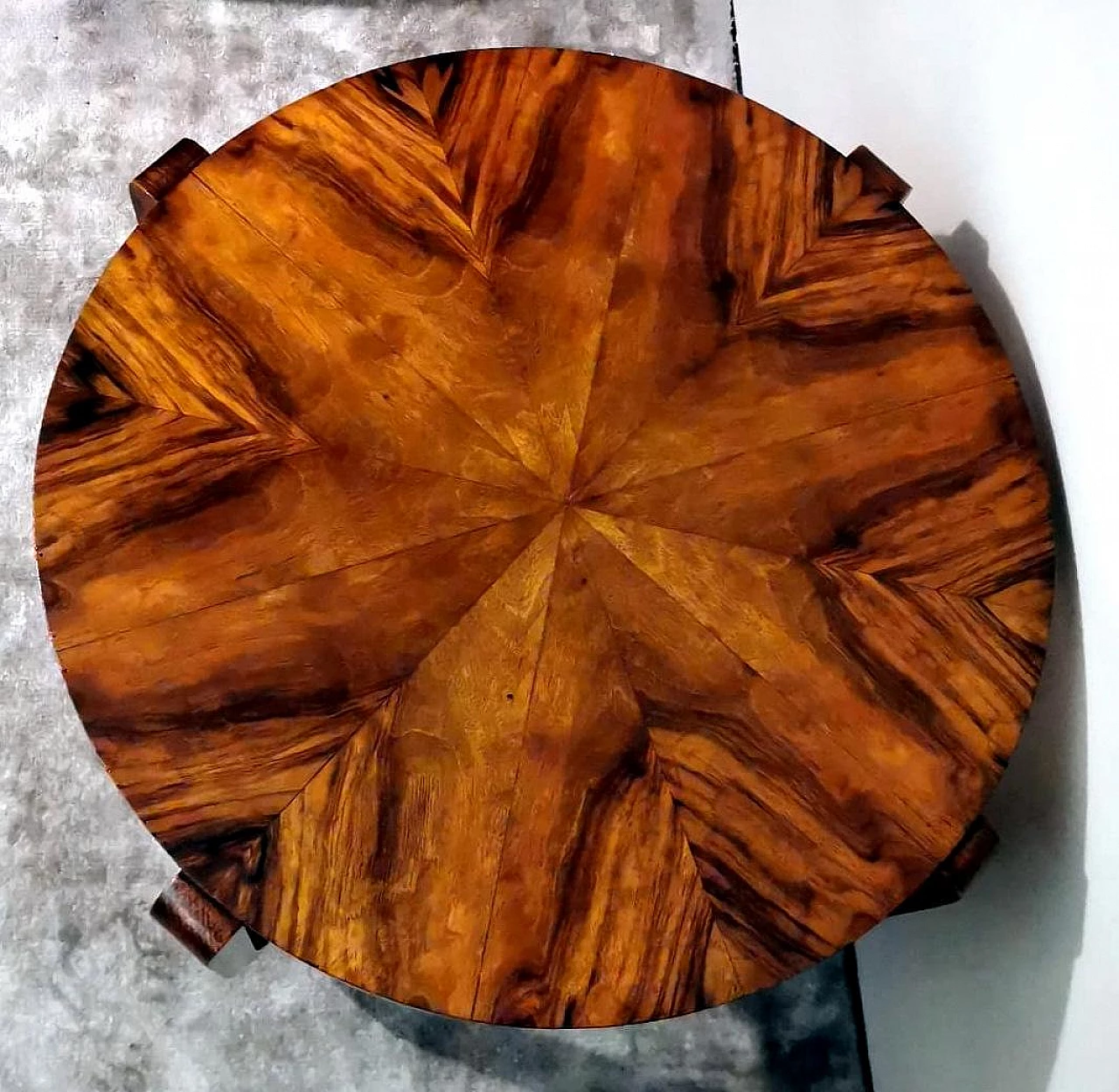
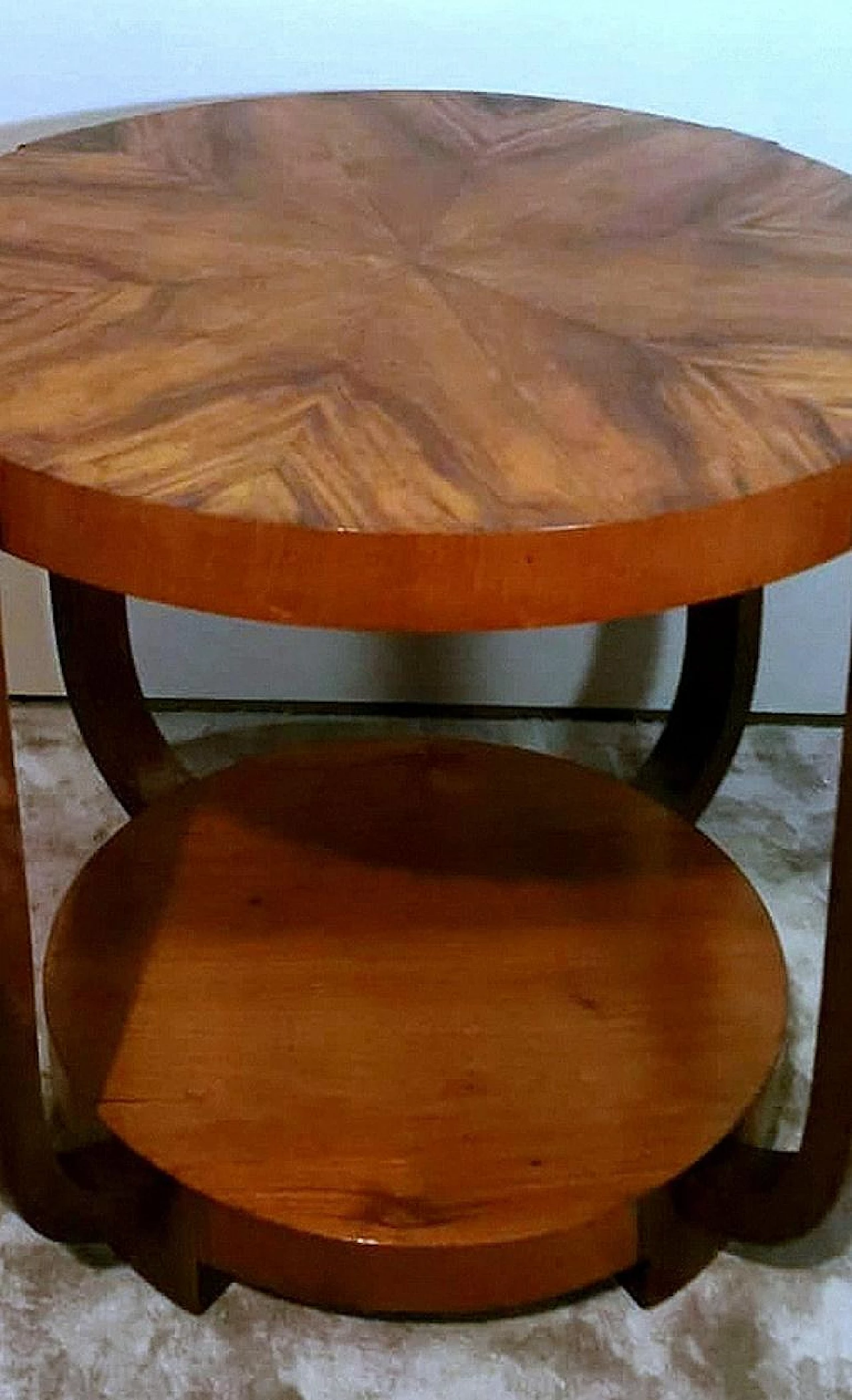
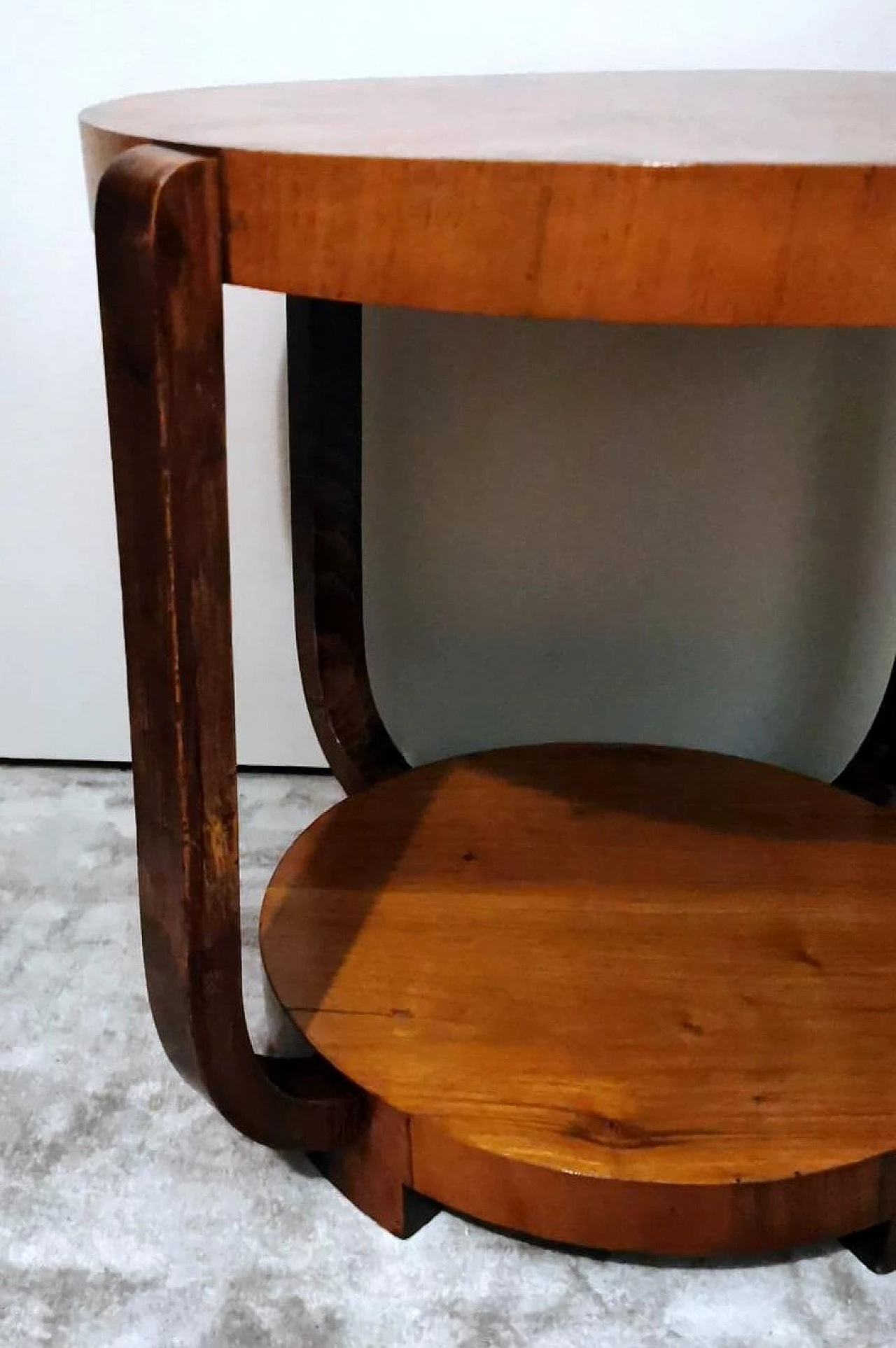
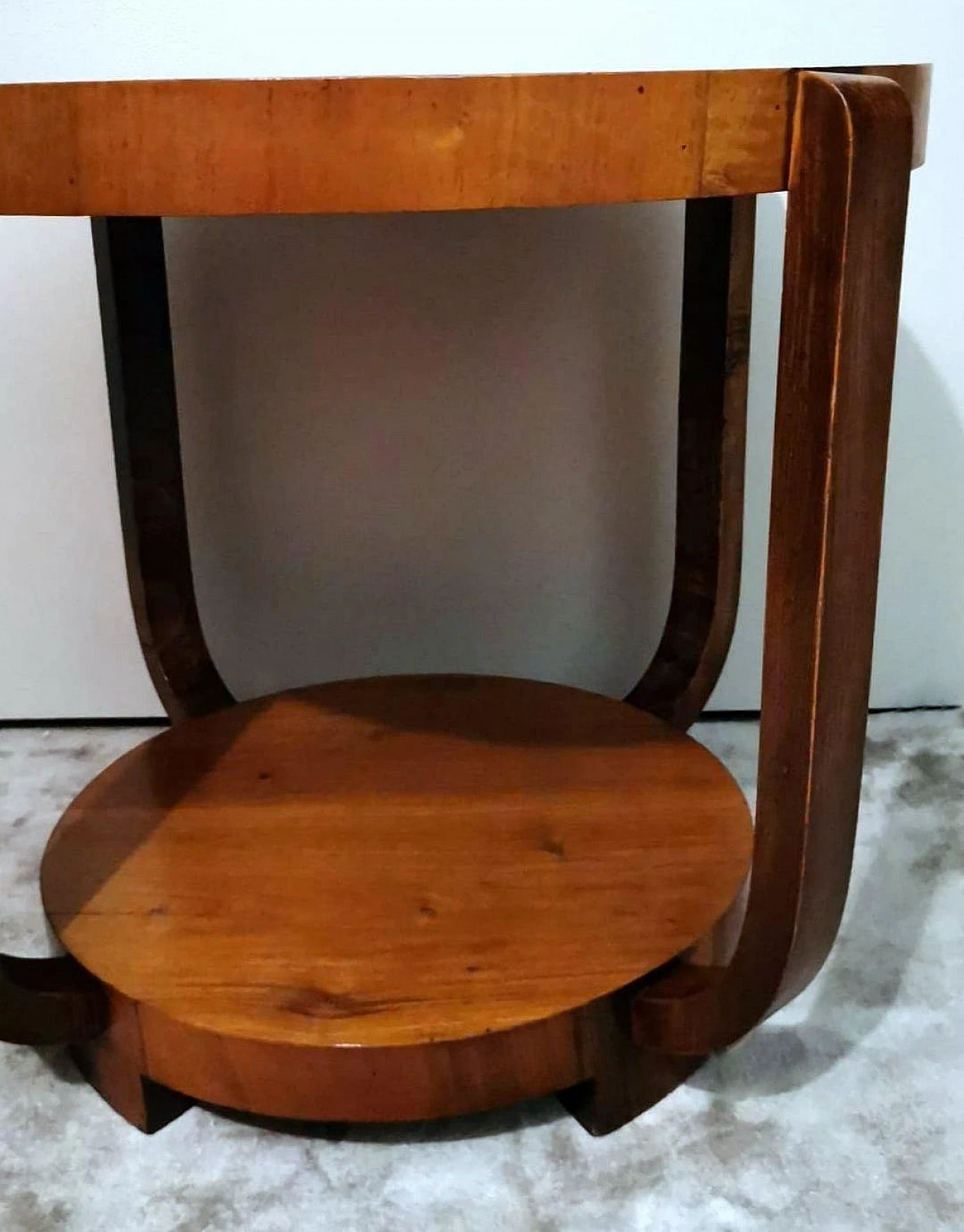
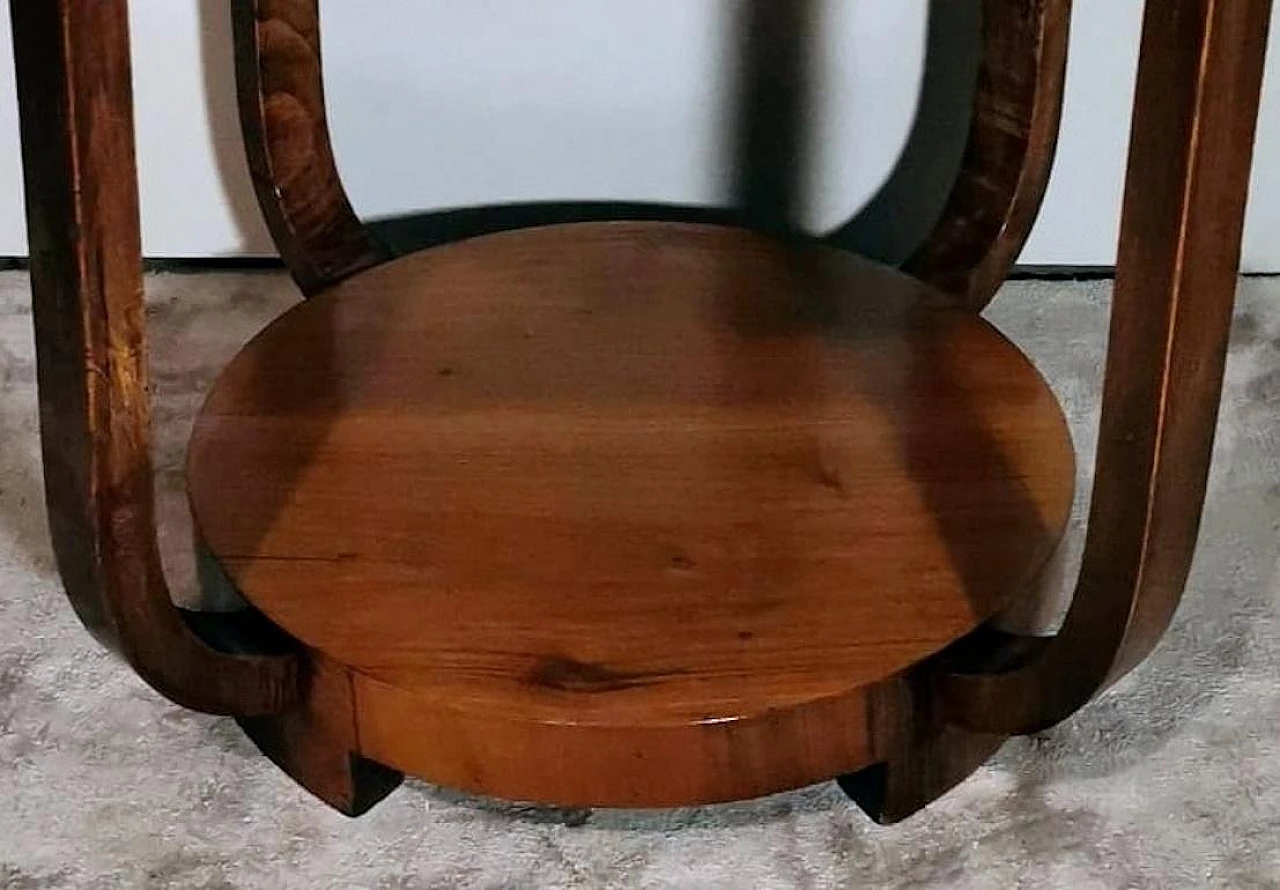
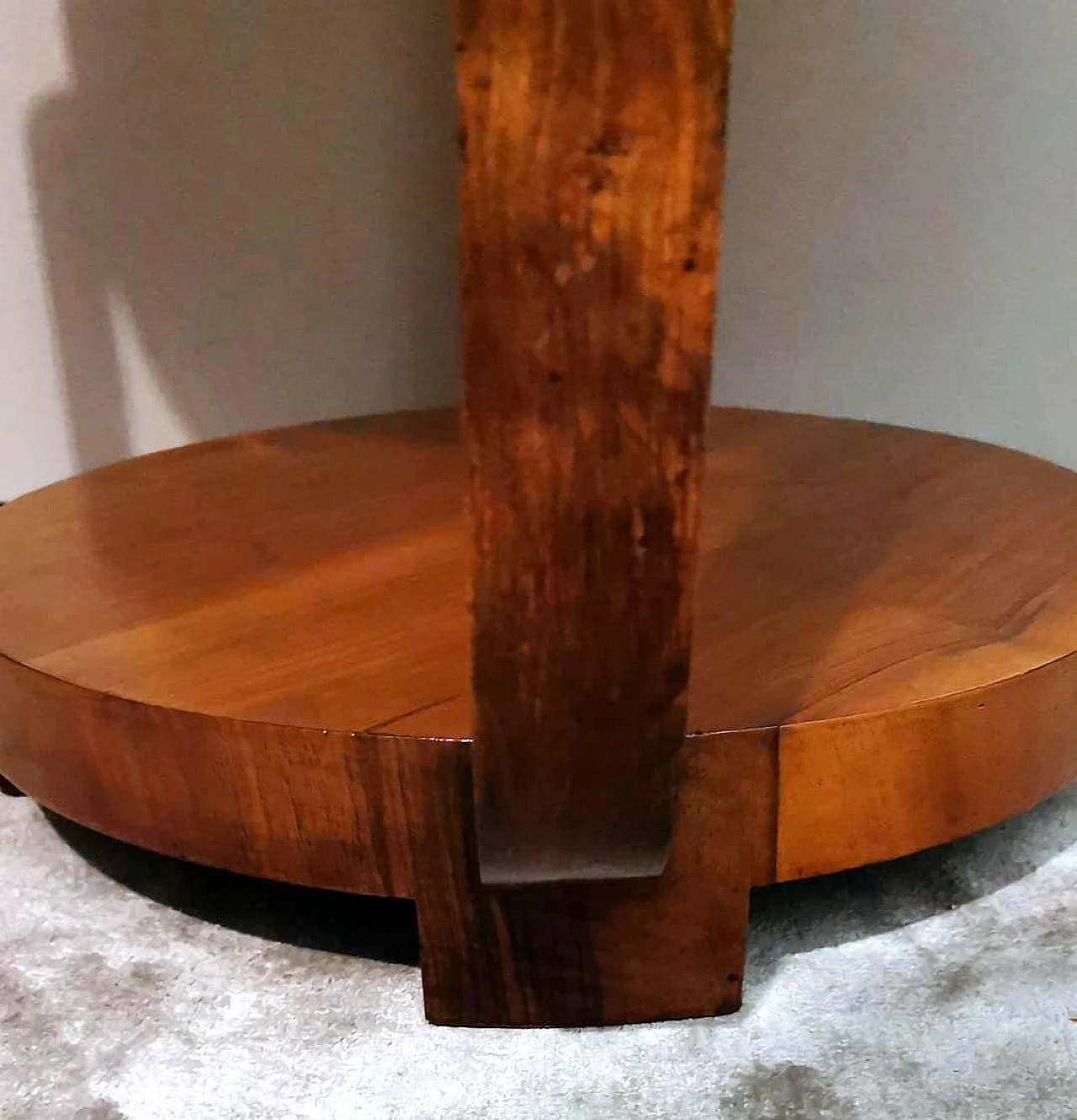
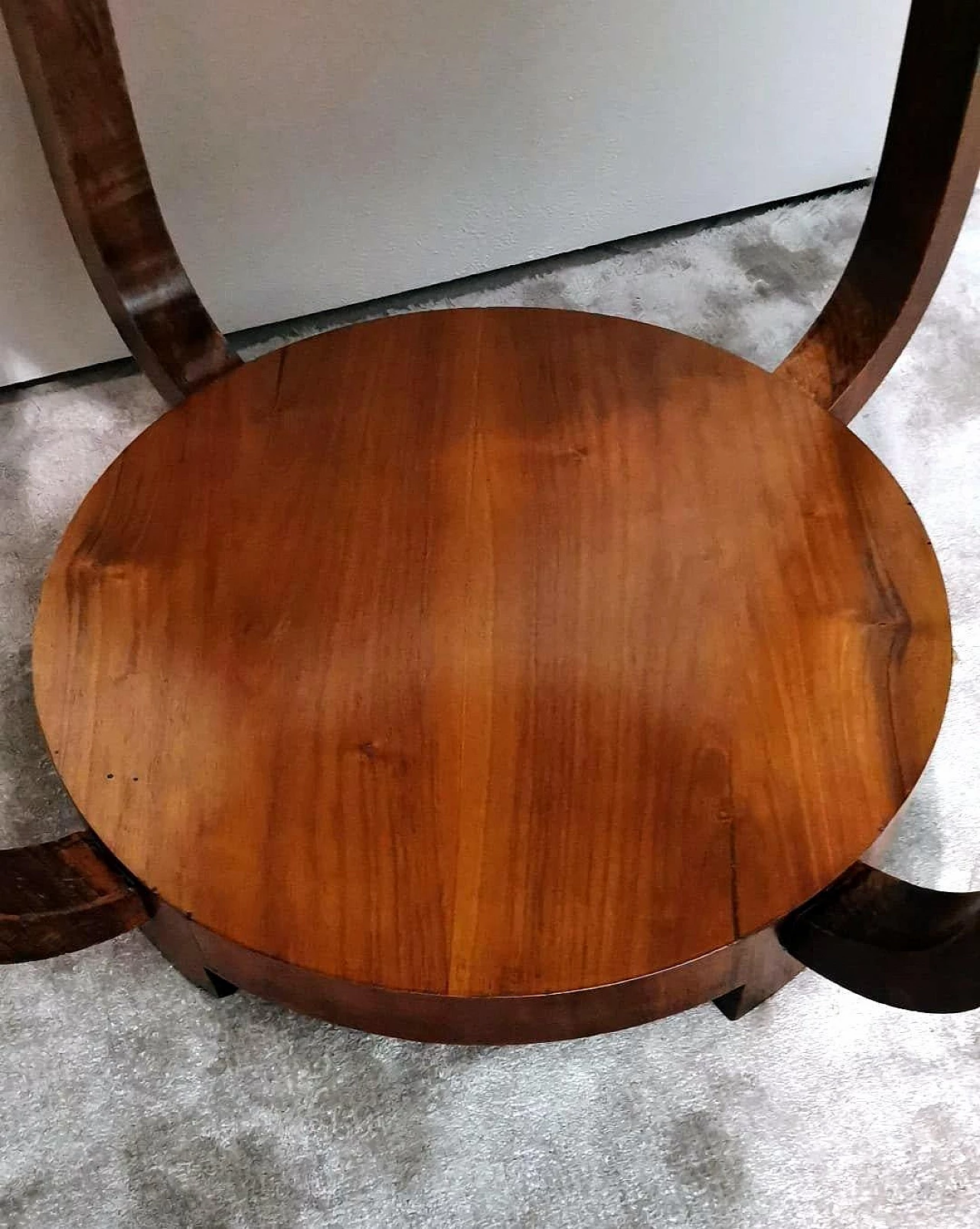
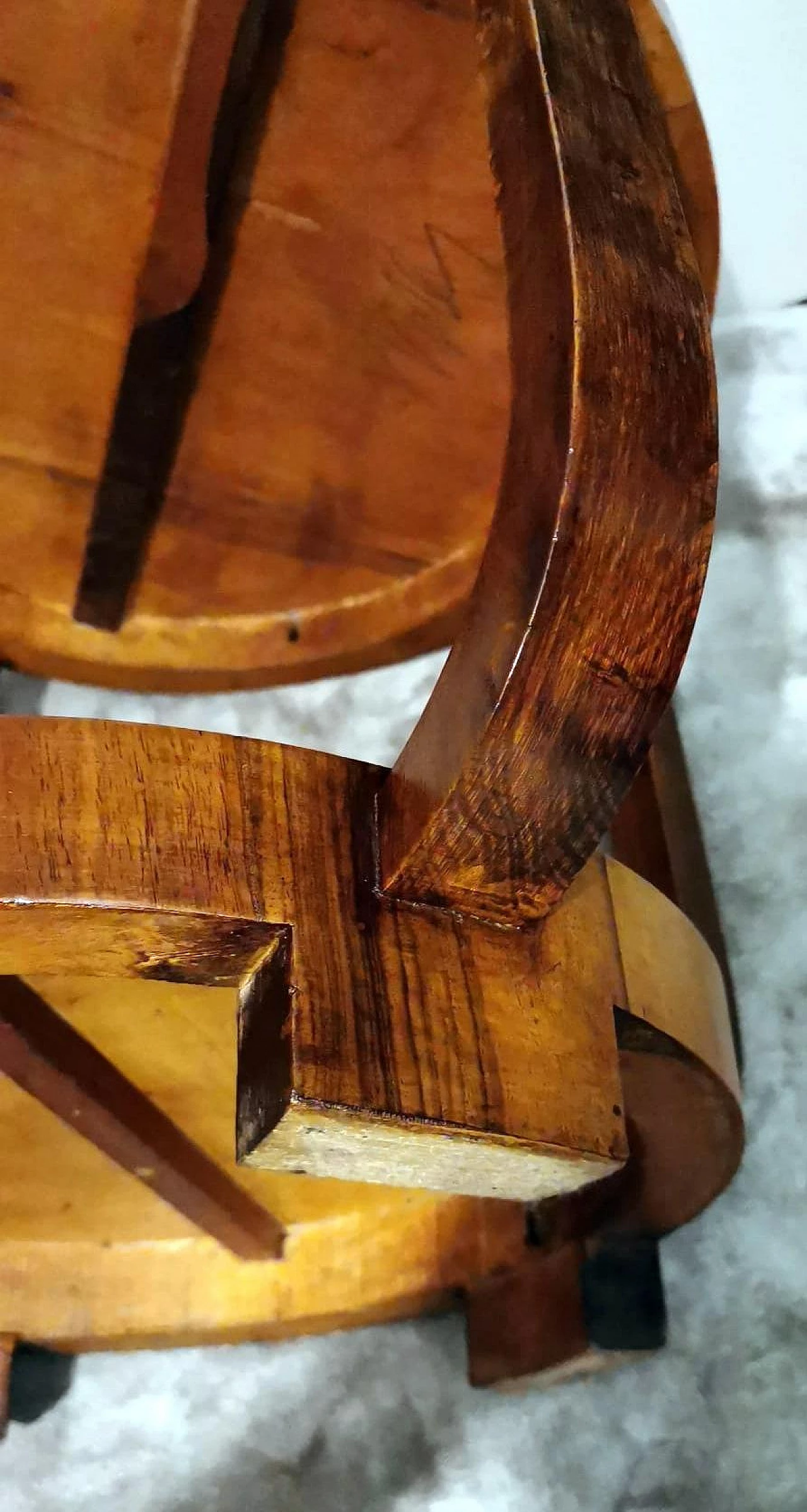


















A refined and elegant Italian Art Deco coffee table in walnut, 1930s. It has an immaculate and linear form, aesthetically refined and pleasing. Four solid legs depart from the edge of the round top, which in the lower part connect in a distinctive and original way to another table top, giving the whole an excellent stability. The coffee table was made between 1930 and 1935 in an artisan's workshop in Cantù, a town located in the province of Como in Lombardy, which has always been renowned for its tradition in the production of luxury furniture and has always been considered an important centre for furniture craftsmanship with a reputation established over the years for the creation of high-quality pieces. The Cantù companies have always supplied furniture for a high-end clientele, including both private individuals and luxury furniture projects for hotels, restaurants and prestigious residences worldwide. This coffee table, with its cleverly contained dimensions and strong, simple lines, has a timeless elegance. Its design plays between austerity and rigour, while its exaggerated linearity gives the object a dynamic and majestic character. The table's distinctive and unique element is the wood with which it is veneered, "Juglans regia", called "national walnut" or "European walnut". Walnut (Juglans regia) is a valuable and expensive hardwood; its colours, flaming and grain have been appreciated for centuries. It is a wood with an incomparable aesthetic appearance. Walnut furniture is highly sought after but also expensive because the proportion of usable wood in each plant is very small. Veneering is an ancient woodworking technique involving the application of a thin layer of fine wood on a substrate of normal-quality walnut wood. The fine walnut wood is harvested from trees grown specifically for this purpose, then cut into thin sheets varying in thickness from 1 to 2 millimetres. The base wood is prepared by applying a special glue, then the fine walnut sheets are applied manually and evenly; after this process, the whole is pressed and allowed to dry, allowing the glue to adhere firmly between the fine walnut wood and the substrate, creating a stable veneer. This, once dry, is finished by sanding, polishing and the application of protective finishes, such as varnishes or oils, to improve the appearance and durability of the wood. The history of veneering goes back many centuries: it is believed that it was first used in ancient Egypt and China. Over the centuries, this technique has spread throughout the world and continued to evolve, becoming an important part of the production of high-quality furniture, luxury goods and objet d'art. This ancient technique, applied to the coffee table proposed here, has made it possible to enhance the colours, flaming and grain of fine walnut. Our team of craftsmen has completely restored the entire wooden structure by hand and the piece of furniture is in excellent condition.
ID: 4672-1712480890-87406
